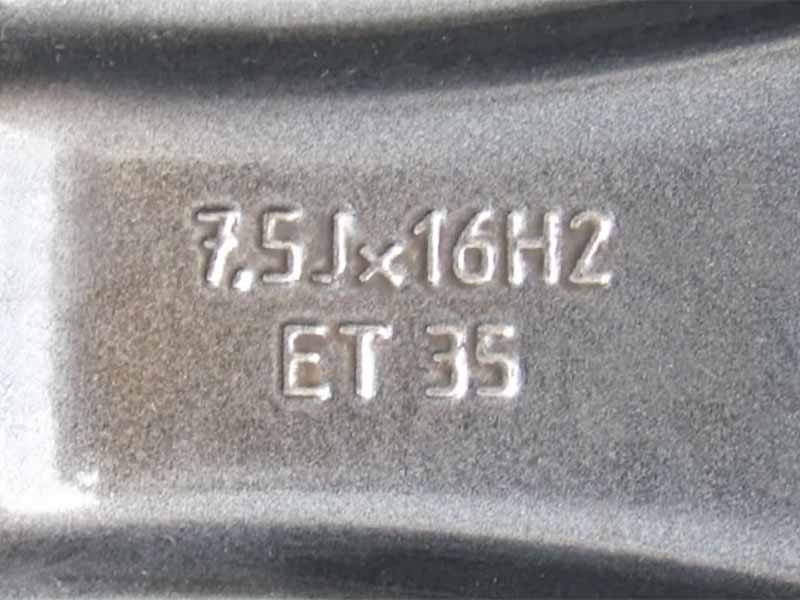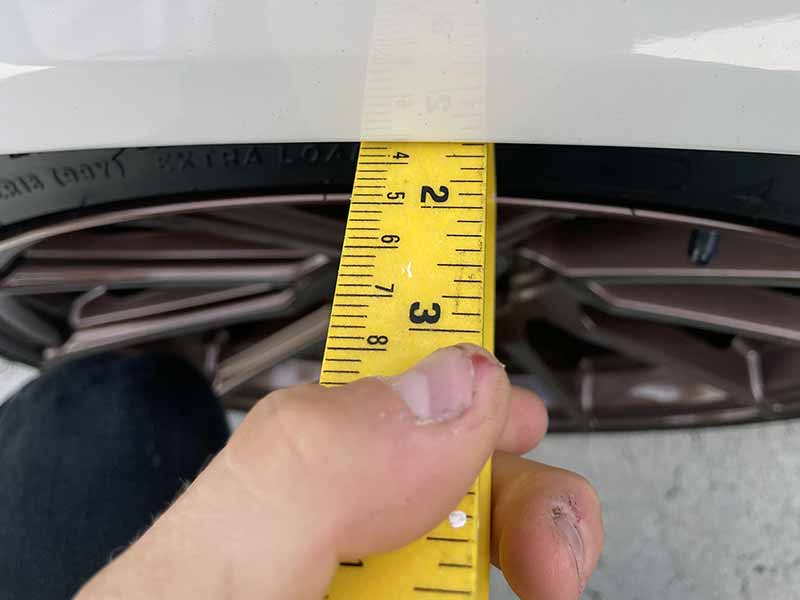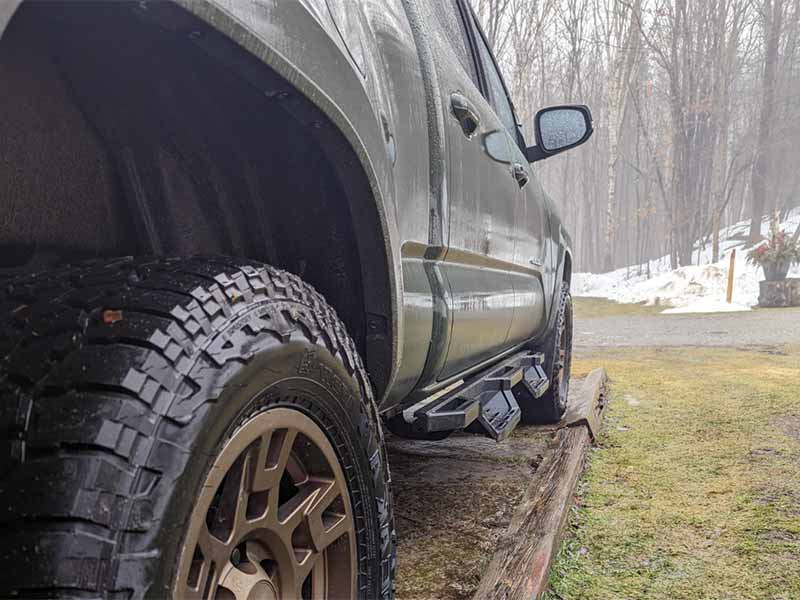Are you curious about how wheel offset can transform your vehicle’s performance and appearance? Whether you’re a car enthusiast or just seeking practical advice, understanding the difference between negative and positive wheel offset is crucial for any driver.
Negative Vs Positive Wheel Offset
Negative wheel offset extends the wheel outwards from the vehicle, creating a wider stance and a more aggressive look, often used in off-road and performance vehicles.
Positive wheel offset tucks the wheel closer to the body, offering a sleek, factory-style appearance, commonly seen in luxury and passenger cars.
In this article, we explore the differences between negative and positive wheel offset, their impact on vehicle handling and appearance, the risks of incorrect wheel offset, and how to choose the right offset for your vehicle
Wheel Offset Comparison Calculator
What is Wheel Offset?
Wheel offset might sound like a complex term, but it’s actually a straightforward concept that plays a crucial role in your vehicle’s performance and safety. Let’s dive into what wheel offset means and its components, so you can make informed decisions about your car or truck.
Understanding the Basics
- Definition: Wheel offset is the distance between the centerline of the wheel and the hub mounting surface where the wheel attaches to the vehicle. This measurement is crucial as it determines how the tires line up with the body of your vehicle.
- Why It Matters: The right offset ensures that your wheels and tires have enough clearance from the suspension, brakes, and the vehicle’s body. It also affects your vehicle’s handling characteristics.
Components of Wheel Offset
Hub Mounting Surface
- This is the part of the wheel that bolts onto your vehicle.
- Its position in relation to the wheel’s centerline defines the type of offset.
Centerline of the Wheel
- Imagine a straight line running through the middle of the wheel, from one edge to the other. This is your centerline.
- It’s the reference point from which the offset is measured.
Types of Wheel Offset
- Negative Offset:
- Occurs when the hub mounting surface is closer to the inside edge of the wheel.
- Makes the wheel extend out further from the vehicle.
- Positive Offset:
- Happens when the hub mounting surface is closer to the outside edge (the face) of the wheel.
- Leads to the wheel being more tucked into the wheel well.
- Zero Offset:
- This is when the hub mounting surface aligns exactly with the centerline.
- Not as common but serves as a good middle ground in certain vehicles.
Visualizing Wheel Offset
- Negative Offset: The wheel protrudes out from the side of the car, giving a more aggressive stance.
- Positive Offset: The wheel sits further inside the wheel well, contributing to a more streamlined look.
Negative Wheel Offset
When it comes to customizing your vehicle, choosing the right wheel offset is key. In this section, we’ll focus on negative wheel offset, what it is, and how it influences your vehicle’s handling and appearance.
Defining Negative Offset
- What It Is: Negative wheel offset occurs when the hub mounting surface of the wheel is closer to the inside edge (the side facing the vehicle).
- Characteristics: This positioning causes the wheel to extend outward, away from the vehicle’s body.
Impact on Vehicle Handling and Appearance
- Wider Stance: Wheels with a negative offset create a wider stance for the vehicle. This can enhance stability, especially in trucks and performance vehicles.
- Appearance: This offset gives a more aggressive, “muscular” look, often desired in custom car and truck builds.
How It Affects Your Vehicle
- Handling Dynamics:
- Enhanced cornering stability due to a wider tire track.
- Possible changes in steering feel, as the wheels are further out from the suspension pivot points.
- Potential Risks:
- Increased stress on wheel bearings and suspension components.
- Risk of tire rubbing against the vehicle’s body or suspension parts, especially during sharp turns or with larger tires.
- Aesthetics:
- Gives a bold, assertive look to the vehicle.
- Popular in off-road and custom truck communities.
Ideal Use Cases for Negative Offset
- Off-Roading: Provides better stability on uneven terrain.
- Performance Cars: Enhances cornering ability and aggressive styling.
- Custom Truck Builds: Ideal for achieving a rugged, dominant appearance.
Positive Wheel Offset
Shifting gears from negative offset, let’s delve into the world of positive wheel offset. This section will explore what positive offset is, how it influences your vehicle, and its ideal use cases.
Understanding Positive Offset
- What It Is: Positive wheel offset occurs when the hub mounting surface is located toward the front or outside edge of the wheel.
- Key Feature: This configuration causes the wheel to sit more inside the wheel well.
The Effects on Vehicle Dynamics and Style
- Narrower Stance: Unlike negative offset, positive offset results in a narrower vehicle stance. This can be advantageous for certain driving conditions and vehicle types.
- Visual Appeal: It offers a more subtle and refined look, often preferred for luxury and standard passenger vehicles.
How Positive Offset Influences Your Ride
- Driving Experience:
- Improved alignment with the vehicle’s suspension, leading to potentially smoother steering.
- Reduced strain on suspension components, as the wheels are closer to their natural pivot points.
- Risks to Consider:
- Limited clearance between the wheel and suspension parts, which might not accommodate larger tires or custom suspension setups.
- Possible impact on handling, as the vehicle may have a less aggressive stance and grip.
- Aesthetic Impact:
- Contributes to a sleek, factory-finished look.
- Common in sedans, SUVs, and other passenger vehicles for a clean, streamlined appearance.
Ideal Applications for Positive Offset
- City Driving and Sedans: Enhances the streamlined look and efficient handling.
- Luxury Vehicles: Complements the refined aesthetics and smooth driving experience.
- Standard SUVs and Trucks: Balances the need for functionality with a sophisticated appearance.

Comparing Negative and Positive Offset
Now that we’ve covered the basics of negative and positive wheel offsets, let’s put them head-to-head. This comparison will help clarify which type of offset might be the best fit for your vehicle and driving preferences.
Direct Comparison
- Wheel Stance:
- Negative Offset: Results in wheels sticking out further from the vehicle, creating a wider stance.
- Positive Offset: Wheels are more tucked in, leading to a narrower stance.
- Handling and Stability:
- Negative Offset: Offers improved stability in cornering but can affect steering geometry.
- Positive Offset: Provides smoother steering and less strain on suspension, but may reduce cornering stability.
- Aesthetic Differences:
- Negative Offset: Gives a bold, aggressive look often favored in off-road and performance vehicles.
- Positive Offset: Delivers a sleek, factory-style appearance, commonly seen in luxury and passenger cars.
Addressing Common Questions
- Is Positive or Negative Offset Better?
- It depends on your vehicle type and driving needs. Negative offset is often preferred for enhanced stability in performance driving and off-roading, while positive offset is better for everyday driving and maintaining factory handling characteristics.
- Do Negative or Positive Offset Wheels Stick Out More?
- Negative offset wheels stick out more from the side of the vehicle, offering a more assertive look and wider stance.
Making the Right Choice
When deciding between negative and positive wheel offset, consider the following:
- Your Vehicle’s Purpose: Are you driving primarily on city streets or tackling off-road trails?
- Desired Handling Characteristics: Do you prioritize cornering stability or smoother steering?
- Aesthetic Preference: Are you looking for a bold, standout appearance or a more understated, classic look?

Choosing the Right Wheel Offset
Selecting the ideal wheel offset for your car or truck is a critical decision that balances performance, safety, and aesthetics. This section offers guidelines to help you make an informed choice, ensuring your vehicle not only looks great but also performs optimally.
Guidelines for Selecting Appropriate Offset
- Understand Your Vehicle’s Needs:
- Consider the type of driving you do most often – city, off-road, performance, or a mix.
- Review your vehicle manufacturer’s recommendations for wheel offset.
- Performance vs. Style:
- Decide what’s more important for you: the look of the vehicle or its handling characteristics.
- Remember, extreme offsets can dramatically alter handling and potentially lead to safety issues.
- Consider Wheel and Tire Size:
- Larger wheels and tires might require adjustments in offset to fit properly without rubbing against the vehicle’s body or suspension.
Enthusiast Clubs And Groups Are The Best Resource For What Fits Your Car Or Truck Best
TireGrades Expert Tip
Tips for Making the Right Choice
- Consult with Professionals: Talk to a trusted mechanic or wheel specialist. They can provide valuable insights based on your specific vehicle model and usage.
- Research and Compare: Look at examples of similar vehicles with different offsets to understand the impact on appearance and performance.
- Test Fitment if Possible: Before finalizing your decision, if there’s an option to test the wheels, take it. This can help ensure compatibility and satisfaction.
Balancing Factors
- Safety First: Never compromise on safety for the sake of appearance. Ensure that your choice of offset doesn’t negatively impact your vehicle’s safety features.
- Long-Term Impact: Consider how your choice of offset will affect tire wear, suspension health, and overall vehicle maintenance.
Resources
Below are some links you may find helpful when learning about tires:
Final Thoughts
Negative offset, with its wider stance, is often preferred for off-road and performance driving.
Positive offset, which keeps the wheel closer to the vehicle, is typically better for everyday driving and maintaining factory handling characteristics.
It’s essential to consider your vehicle’s specifications, your driving needs, and personal style preferences when selecting the right wheel offset.
Good luck and happy motoring.




